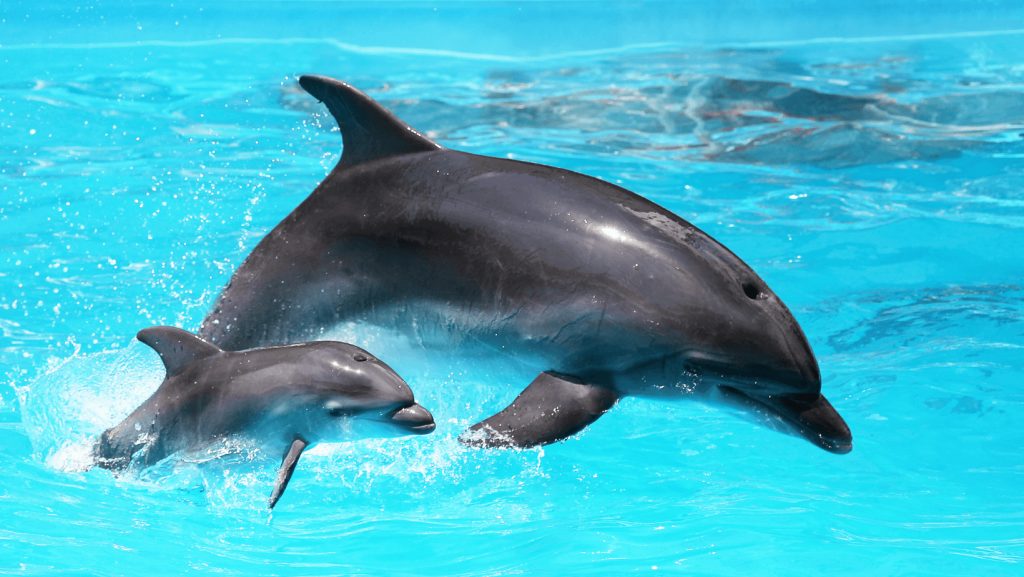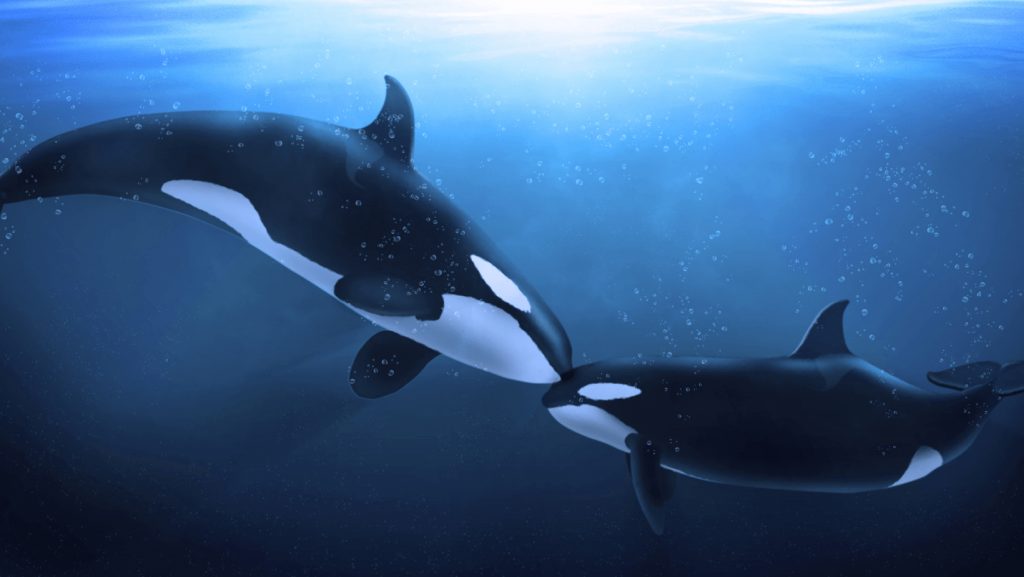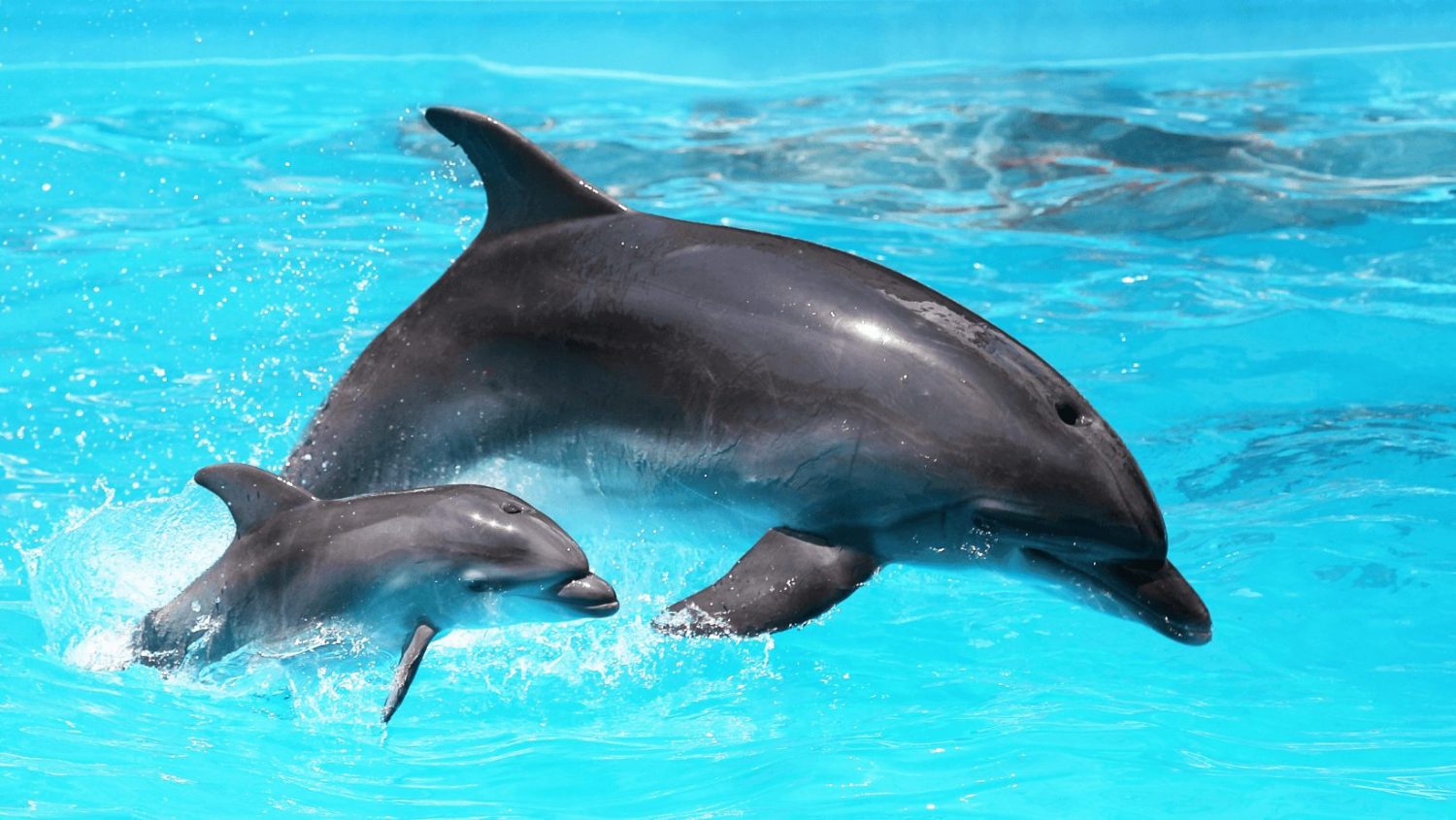
A Recognizable Species
Arguably the most well-known species is the common bottlenose dolphin. This is because they’re easy to view in the wild, as they live close to shore and are found throughout coastal and estuarine waters. The species gets its name from its short, thick snout (or rostrum).
Another feature commonly associated with the bottlenose dolphin is its chatty nature. They track their prey using echolocation, and an echolocating bottlenose dolphin can make up to 1,000 clicking noises per second. They’re extremely social mammals and they communicate with each other using squeaks, whistles, and clicks. In fact, scientists have debated for decades whether dolphins have “language” like humans do.
They’re also known for their high level of intelligence. Further proving their cognitive abilities, bottlenose dolphins are one of the few species, along with apes and humans, that can recognize themselves in a mirror. They are also among the few animals that have been observed using tools. Dolphins in Western Australia have been seen fitting marine sponges over their beaks to protect them from sharp, harmful rocks as they forage for fish.

River Dolphins
While most dolphins are marine mammals, there are several species that live in freshwater rivers and lakes. Amazon River dolphins, popularly called “botos,” live in the rainforest rivers of South America. Botos have a very distinctive look from marine dolphins. They are pink or pinkish-gray in color and have low, ridge-like dorsal fins, long, skinny snouts, plump bodies, chubby cheeks and round, bulbous foreheads.
South Asia is also home to several species of river dolphins. The Indus River dolphins and Ganges River dolphins live in separate river systems but they appear identical because they have a common ancestor. Unfortunately both species are endangered. There are only 1,000-2,000 Indus River dolphins and less than 5,000 Ganges River dolphins left in the world.
South Asian river dolphins have several distinctive qualities. They’re less social than other species and are generally found alone, in pairs, or occasionally in small groups. As a result of poor visibility in murky, sediment-laden river water, their vision has degenerated so they focus even more heavily on echolocation to hunt.

A Distinctive Dolphin
The orca (also known as the “killer whale”) is actually a member of the dolphin family. In fact, the orca is the largest dolphin species, as they can grow to be over 30 feet long. Known for their distinctive black and white patterning and huge dorsal fins, orcas are the only dolphins that live in the Arctic and Antarctic. Their large size helps to protect them from freezing water temperatures.
Orcas are yet another social species, and they live in pods of up to 50 individuals. Calves stay with their maternal family even when they reach adulthood, so pods can sometimes include four generations of family. Orcas eat a variety of prey, but pods will often specialize in hunting a particular type of animal. For example, some pods are master seal hunters while others are highly adept at chasing down salmon.
The species gets its nickname “killer whales” from their reputation of being ferocious predators, exhibiting aggressive behaviors when toying with their prey. But even though they show almost tortuous behavior towards large sharks and other marine mammals, killer whales have never been known to attack humans in the wild. In captivity, male orcas have shown more aggressive behavior towards humans, which is thought to be due to the unnaturally small space they are given in exhibits.
Pop Quiz
(NBA) Slam Dunk Contest

